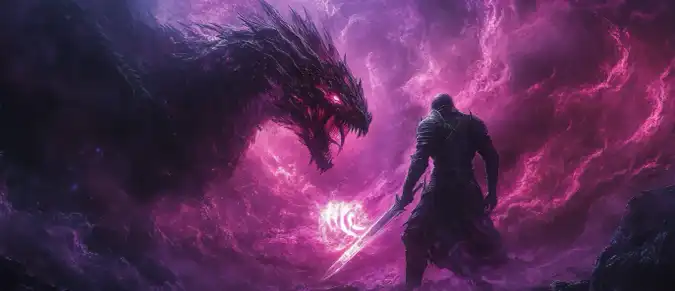AVALON MMO — a large-scale MMORPG that combines an open world, user-generated content, and on-chain economy. Built on Unreal Engine 5, it offers players true ownership of in-game assets through NFT and multichain integration (Immutable X, WAX, Polygon, BNB). The project’s goal is to unite Web2 and Web3 gamers, giving them the ability to explore, build, earn, and own. The game is available on the Epic Games Store and preparing for release on PC and consoles.
- Setting and genre model of AVALON MMO
- Technical architecture and multichain integration
- Gameplay, UGC, and player roles in Avalon
- Game economy, asset ownership, taxes, and tokenomics
- Roadmap, team, investors, and prospects

Setting and genre model of AVALON MMO
The world of AVALON is a fantasy realm intertwining Arthurian legends, medieval kingdoms, magic, and advanced technologies. Players can become part of an evolving story — from landowners to raid heroes. The project blends MMORPG, sandbox, and UGC mechanics, allowing everyone to create their own worlds and items. Unreal Engine 5 delivers cinematic visuals and dynamic lighting, turning AVALON into a AAA product appealing to both Web2 and Web3 audiences. Additionally, the world is built as a living ecosystem where player decisions influence balance and politics. Each region offers unique resources, enemies, and growth opportunities, creating a foundation for trade and diplomacy. Seasonal updates ensure that Avalon’s story evolves over time, with events becoming part of the community’s collective history.
Technical architecture and multichain integration
AVALON’s architecture separates gameplay from blockchain logic. Core gameplay runs on centralized servers, while blockchain is used exclusively for ownership and asset trading. This reduces latency and improves performance. Supported networks include Immutable X, WAX, Polygon, and BNB, letting players choose optimal fees and marketplaces. Wallets such as Venly, MetaMask, Ledger, and WAX Cloud Wallet are compatible, making the game accessible to both new and experienced users. Each blockchain serves a specific role — Immutable X enables gas-free transactions, WAX supports mass NFT usage, while Polygon and BNB provide liquidity via DeFi integrations. This setup creates a robust, flexible infrastructure where assets can move freely between chains. The team also plans cross-platform wallet synchronization to preserve player progress across devices and networks.
Gameplay, UGC, and player roles in Avalon
AVALON offers a vast world where players can become warriors, merchants, creators, or explorers. The open environment includes cities, harbors, and dungeons. Six-player raids, PvP, PvE, and land ownership are just part of the experience. The UGC system allows players to design buildings, quests, and storylines that shape the universe, turning the community into co-creators. Moreover, AVALON’s flexible role system follows the principle of “play your way” — players can switch from crafting to leadership or exploration at any time. This fluidity removes traditional genre limits and enhances immersion. Player-made settlements host missions, trading posts, and hubs of social interaction, forming a self-sustaining digital society.
Below are the main roles and activities available in the game:
- Landlord: acquires land and earns income through taxes.
- Craftsman or farmer: produces resources and goods for the market.
- Explorer or hunter: participates in raids and collects rare NFTs.
- Navigator: manages mounts and transports goods across regions.
- UGC creator: designs missions and buildings for other players.
Each role can be combined, creating unique progress and income paths. This player-driven ecosystem makes Avalon a living, evolving world. The diversity of professions supports long-term engagement, while its social structures encourage cooperation, guilds, and alliances that influence the balance of power.
Game economy, asset ownership, taxes, and tokenomics
The AVALON economy revolves around ownership and shared value. NFTs represent characters, lands, mounts, and buildings. Players earn through Play-to-Earn and Own-to-Earn models, while landlords collect taxes and rental income. The table below summarizes the core elements of AVALON’s economy:
| Component | Description | Function |
|---|---|---|
| NFT ownership | Characters, lands, and buildings exist as NFTs | Enables trading and passive income |
| Taxes and rent | Landlords charge users for land utilization | Creates sustainable passive income and regional economies |
| Play-to-Earn | Rewards from missions and raids | Active gameplay generates tokens and NFTs |
| Own-to-Earn | Earnings through ownership | Allows profit without direct playtime |
In-game currency supports transactions, upgrades, and market interactions. Prices are player-driven, creating a live market with demand and inflation mechanics. The team plans to introduce a stable token for land taxes and rentals to stabilize income flow. This transforms Avalon from a game with NFTs into a full-fledged financial metaverse powered by player ownership and creativity.
Roadmap, team, investors, and prospects
AVALON develops in phases: alpha tests, new network integrations, UGC module releases, and a mobile app for landlords. The project is backed by Bitkraft Ventures, Hashed, Delphi, and other investors. The team’s mission is to create a AAA MMO where blockchain functions invisibly within the gameplay experience. If successful, AVALON could demonstrate how Web3 games can reach the mainstream market and redefine virtual asset interaction. Early alpha versions have received positive feedback for their visual fidelity and gameplay depth. Upcoming plans include cross-platform multiplayer and VR support. Partnerships with marketplaces ensure seamless NFT integration, reinforcing Avalon’s long-term strategy and its ambition to become a flagship in AAA Web3 gaming.





